Everest Base Camp Trekking Route 12 - 14 Days

Everest Base Camp trek 12 Days — the classic EBC trek — begins with a thrilling Lukla flight from Kathmandu to Lukla (2,840m/9,316ft), then a scenic trek to Phakding (2,610m/8,561ft). The trail climbs through Sherpa villages and rhododendron forests as you head from Phakding to Namche Bazaar (3,440m/11,284ft), the bustling gateway to Sagarmatha National Park. Namche is your vital acclimatization stop: explore the market, visit viewpoints, and prepare for high-altitude trekking.
From Namche Bazaar the route leads to Tengboche (3,860m/12,661ft), home to the iconic Tengboche Monastery with sweeping Himalayan panoramas. Continue to Dingboche (4,410m/14,465ft) for a second acclimatization day — essential for a safe Everest Base Camp trek. After acclimatizing, the path climbs to Lobuche (4,910m/16,105ft) and onward to Gorak Shep (5,140m/16,860ft), the last stop before Everest Base Camp.
A memorable summit-day vibe: trek from Gorak Shep to Everest Base Camp (5,364m/17,594ft) to stand amid the Khumbu icefall, then hike to Kala Patthar (5,550m/18,204ft) at sunrise for the ultimate Everest view. Descend to Pheriche (4,240m/13,908ft) to recover, then follow the classic return route from Pheriche back to Namche Bazaar, drop to Lukla (2,840m/9,316ft), and catch the flight to Kathmandu (1,400m/4,592ft).
This Everset Base Camp Trek itinerary blends Lukla flights, acclimatization, Sherpa culture, Kala Patthar sunrise, and the life-changing moment at Everest Base Camp — the definitive Everest trekking experience.
Kathmandu to Lukla (2,840m/9,316ft) and trek to Phakding (2,610m/8,561ft)
Every high-altitude trek in Nepal often begins with a heart-thumping mountain flight — and the route from Kathmandu to Lukla (2,840 m / 9,316 ft) is no exception. Flights depart early in the morning to dodge afternoon clouds. The 35–40 minute ride offers dramatic Himalayan panoramas — snow-capped peaks, deep valleys, and ridgelines unfolding beneath your wings.
Landing at the tiny Tenzing-Hillary Airport in Lukla is itself a feat: only a short, sloped runway carved into the mountainside, flanked by cliff and drop, calls for a skilled pilot and nerves of steel. Once your boots touch the ground in Lukla, your real journey begins: the trek to Phakding (2,610 m / 8,561 ft). The trail from Lukla to Phakding is about 8–9 km long, and typically takes 3–4 hours depending on pace, trail condition, and acclimatization.
You’ll descend slightly in net elevation (a drop of ~230 m), winding through rhododendron forests, crossing suspension bridges over the Dudh Kosi and side streams, passing small Sherpa settlements, mani walls, prayer flags, and mountain views emerging gradually.
Phakding sits in the Dudh Kosi valley, perched at 2,610 m. It’s a humble village of guesthouses and tea-houses, offering trekkers a quiet first night in the Khumbu region. This transition — from the aerial thrill to the gentle forested trail — helps your body adjust to altitude and sets the rhythm for the days ahead. If you like, I can also write a vivid “day by day” narrative or include safety and acclimatization tips.
Trek from Phakding to Namche Bazaar (3,440m/11,284ft)
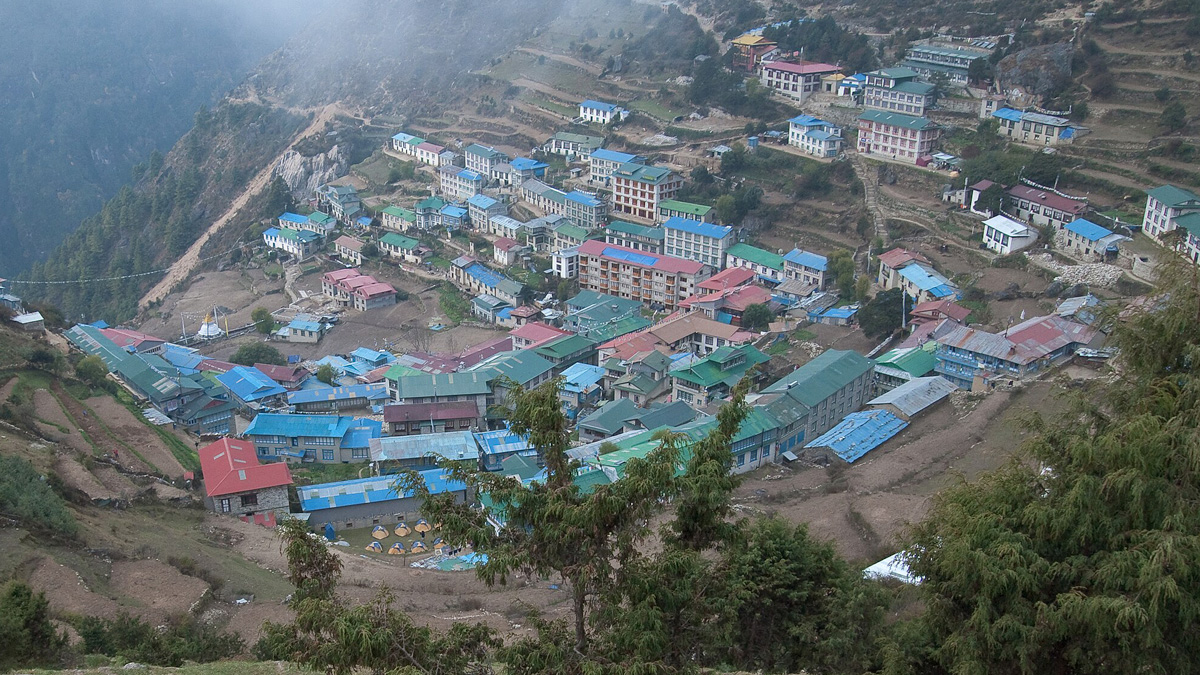
Leaving Phakding (2,610 m / 8,562 ft), the trail climbs through rhododendron and pine forest, following the rushing Dudh Koshi river. You cross multiple suspension bridges—including a dramatic span over the river—and pass through the villages of Monjo and Jorsale before entering Sagarmatha (Everest) National Park at the Monjo checkpoint.
After the park entrance, you leave the more level river valley behind and begin a steep, sustained ascent. The final section is challenging: switchbacks, stone steps, and a climb that may make you stop often to catch your breath as oxygen levels drop.
Namche Bazaar emerges perched on a ridge. At ~3,440 m, it’s a bustling Sherpa hub, full of lodges, teahouses, bakeries, small shops, internet cafes, local markets and sweeping Himalayan views. Everest, Lhotse, Ama Dablam and other major peaks become visible if skies are clear.
Time for the day is usually 5-7 hours, distance around 7-10 km depending on route and stops. Because of the altitude gain, this is also the first major acclimatization point on the Everest Base Camp trek. Trekkers often stay a rest day in Namche to adjust.
Trek from Namche to Tengboche (3,860m/12,661ft)
Namche Bazaar → Tengboche (3,860 m / 12,661 ft) is a classic Everest-region day-stage on the Everest Base Camp trek — a high-value Himalayan trek that rewards trekkers with sweeping Everest, Ama Dablam and Lhotse panoramas and a visit to the iconic Tengboche Monastery. Elevation of Tengboche is ~3,860 m.
Expect ~9–11 km (5–6 hours) of mixed ups-and-downs through rhododendron and pine forest, occasional stone stair sections, and open ridgelines that reveal sunrise views over the high peaks — perfect for Everest-view photographers and tea-house style trekking.
Difficulty & acclimatization: moderate effort but altitude gain matters—Namche (≈3,440 m) to Tengboche gains roughly 400–500 m, so rest in Namche beforehand and follow acclimatization best practices to reduce altitude sickness risk; carry layers, sun protection and a basic first-aid kit.
What to expect in Tengboche: a serene Sherpa village centered on Tengboche Monastery — watch early-morning prayer flags, enjoy panoramic tea-house sunsets, and absorb Sherpa culture and Himalayan spirituality. Best seasons: spring (Mar–May) and autumn (Sep–Nov) for clear mountain views and stable weather.
Trek from Tengboche to Dingboche (4,410m/14,465ft)
Tengboche to Dingboche trek — vivid high-altitude route in the Everest region. This classic Tengboche to Dingboche trek section links Tengboche (3,870m) — famous for its Tengboche Monastery and sweeping Ama Dablam views — to Dingboche (4,410m/14,465ft), a key acclimatization village on the Everest Base Camp trek. Expect 5–7 hours walking through rhododendron forests, mani walls, and the Imja Khola valley. Highlights: panoramic Himalayan scenery, close-up Ama Dablam, Taboche and Island Peak silhouettes, Sherpa villages at Pangboche and Somare, and traditional tea house trekking in Nepal. Terrain shifts from stone paths to moraine flats; river crossings and gradual gains test your high altitude trekking fitness. Arrival in Dingboche offers stone-built lodges, yak-buttered tea, and essential acclimatization days — ideal for short hikes to Nagarjun Hill or resting before pushing to Lobuche and Everest Base Camp.
Difficulty: moderate-hard (altitude is the main challenge); carry layered clothing, sun protection, and hydration gear. Safety tips: acclimatize, watch for AMS symptoms, hire an experienced guide/porter, and follow weather updates.
Trek from Dingboche to Lobuche (4,910m/16,105ft)
Dingboche to Lobuche (4,910 m / 16,105 ft) is a classic stage on the Everest Base Camp trek —high-altitude trekking in the Himalaya offering stark glacial scenery, Sherpa villages, and panoramic mountain views. The trail gains steady altitude (typical day: 5–7 hours, ~10–12 km), crossing moraine fields, tussock meadows, and yak pastures before reaching Lobuche village and its rustic teahouses. Expect dramatic views of Ama Dablam, Thamserku, and distant Everest ridgelines; the route is ideal for continued acclimatization after rest in Dingboche. Key tips: walk slow, hydrate, monitor for acute mountain sickness (AMS), and use trekking poles for loose scree. Spring (Mar–May) and autumn (Sep–Nov) are best seasons for clear skies and stable weather. Facilities are basic—hot meals, lodges, and oxygen at larger teahouses—so pack layered clothing, a warm sleeping bag, and sunscreen. Many trekkers use Lobuche as the penultimate stop before Gorak Shep and Everest Base Camp, or to summit nearby viewpoints like Kala Patthar for sunrise photos. For safety, travel with an experienced guide, carry a headlamp and contingency plans, and respect high-altitude pacing for a successful, memorable Everest region trek.
Trek from Lobuche to Gorak Shep (5,140m/16,860ft) and visit Everest Base Camp (5,364m/17,594ft)
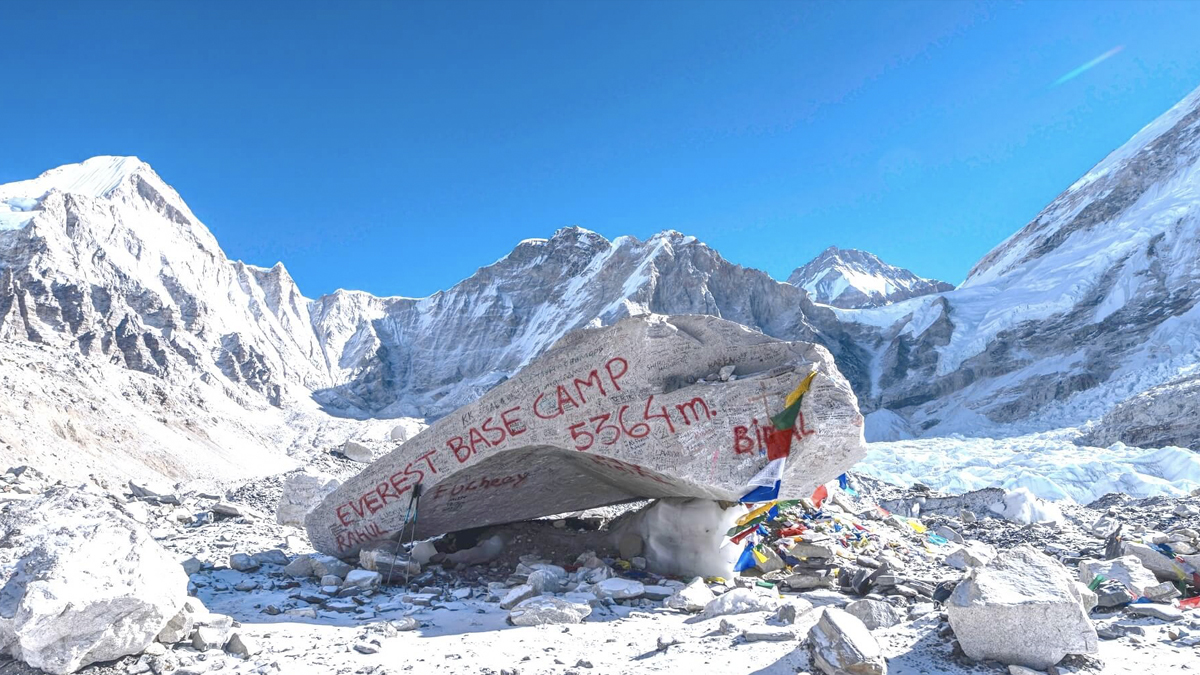
The Lobuche → Gorak Shep push is the high-altitude heart of the Everest Base Camp (EBC) trek: a short but brutal 4–5 km day that climbs from ~5,140 m in Lobuche to Gorak Shep (~5,140–5,180 m) and sets you up to walk to Everest Base Camp (5,364 m).
Trail notes: expect rocky moraine, loose scree, steady wind and dramatic Khumbu Glacier vistas—every step feels harder because of thin air, so hike slow, use trekking poles, sip water, and prioritise acclimatization.
From Gorak Shep you do an out-and-back to Everest Base Camp (3–4 km one way including moraines) and return the same day to Gorak Shep for the night; total day distance to EBC and back is commonly 8–12 km and takes 6–8 hours depending on pace and conditions.
Highlights & tips: watch for AMS (acute mountain sickness); book teahouse accommodation in Gorak Shep in advance; carry warm layers for strong winds and nighttime lows; don’t miss Kala Patthar at sunrise for the classic Mount Everest panorama. Permits (TIMS, Sagarmatha National Park) and a guide/porter improve safety and logistics on the Lukla → EBC route.
Hike to Kala Patthar (5550m/18,204ft) and descend to Pheriche (4,240m/13,908ft)
Hike to Kala Patthar (≈5,550 m / 18,204 ft) is the Everest Base Camp trek’s showstopper — a steep pre-dawn climb from Gorak Shep that delivers the ultimate Everest viewpoint, golden-hour sunrise on Everest and panoramic views of Everest, Lhotse, Nuptse and the Khumbu Icefall. Expect 2–4 hours up (depending on pace and acclimatization), thin air, crampon-ready boots in winter, and breathtaking photo ops for “best Everest photos” and “panoramic Himalaya view.” After savoring the summit light you descend to Gorak Shep, grab breakfast, then trek down via Lobuche and Dughla to Pheriche (≈4,240 m / 13,908 ft) — a popular acclimatization stop with cozy teahouses, warming dal-baht, and better oxygenation. The route is ideal for trekkers seeking iconic Everest Base Camp highlights, dramatic mountain panoramas, and a sensible descent for AMS recovery.
Best seasons: spring (Mar–May) and autumn (Sep–Nov) for clear skies and stable trekking conditions. Pack layered insulation, trekking poles, water purification, and permit essentials (TIMS + Sagarmatha NP). This classic Kala Patthar to Pheriche day combines bucket-list views, high-altitude trekking skills, and teahouse comfort.
Trek to Namchhe to Lukla and flight to Kathmandu
Trek from Namche Bazaar to Lukla marks the final leg of the Everest Base Camp journey, offering a scenic descent through the Khumbu region. This approximately 17.7 km (11 miles) trek typically takes 5–6 hours, descending from 3,440 m to 2,860 m. The trail meanders through lush forests, alongside the Dudh Koshi River, and past Sherpa villages, providing trekkers with a rich cultural experience and breathtaking Himalayan views.
Upon reaching Lukla, trekkers can catch a flight back to Kathmandu. The flight duration is approximately 32 minutes, offering aerial views of the rugged terrain. Flights are available on various days of the week, with Tuesdays, Wednesdays, and Saturdays often offering the best deals. Booking in advance is advisable to secure seats, as flights can fill up quickly, especially during peak trekking seasons.
It's important to note that Lukla's Tenzing-Hillary Airport is renowned for its challenging conditions, including a short runway and unpredictable weather. Therefore, flexibility in travel plans is recommended, and travelers should be prepared for potential delays or cancellations.
Best Time for Everest Base Camp Trek
The best time for Everest Base Camp Trek is during the pre-monsoon (spring) from March to May and post-monsoon (autumn) from late September to November. These months offer clear skies, moderate temperatures, and stunning Himalayan views, making it ideal for trekking in Nepal. Spring is perfect for mountain photography, blooming rhododendrons, and wildlife spotting, while autumn offers crisp air, stable weather, and vibrant landscapes. Winter treks (Dec–Feb) are cold but less crowded, and monsoon (Jun–Aug) brings heavy rain, slippery trails, and limited visibility. For an Everest Base Camp adventure, spring and autumn remain the most popular trekking seasons in Nepal.
Is there possibility to ride Helicopter from Everest Base Camp to Lukla or Kathmandu?
Yes, it is possible to take a helicopter from Everest Base Camp (EBC) to Lukla or Kathmandu, offering a scenic and time-saving alternative to the traditional trek.
Helicopter from EBC to Lukla: This flight typically takes about 20 minutes, providing breathtaking aerial views of the Khumbu region, including peaks like Ama Dablam, Thamserku, and Pumori. It's an excellent option for trekkers looking to avoid the strenuous return trek to Lukla. Shared flights cost approximately USD 600 per person, while private charters range from USD 1,500 to USD 2,000.
Helicopter from EBC to Kathmandu: Direct flights from EBC to Kathmandu are also available, offering a quicker and more comfortable return journey. These flights provide stunning views of the Himalayas and are ideal for those with limited time. The cost for such flights varies, and it's advisable to check with local operators for the most current pricing and availability.
Considerations: While helicopter flights offer convenience, it's essential to be aware of local regulations. The Khumbu municipality has announced a ban on helicopter flights to Mount Everest, effective January 1, except for rescue missions. This decision responds to complaints about noise pollution and environmental impact. Travelers should consult with local authorities or tour operators to ensure compliance with current regulations.
Everest Base Camp Trek Gear Guide
Embarking on the Everest Base Camp (EBC) trek is a monumental adventure that demands meticulous preparation. To ensure your journey is both safe and enjoyable, it's crucial to equip yourself with the right gear. Below is a comprehensive packing list, incorporating high-traffic search keywords to assist in your planning.
Clothing: Layering for Extreme Conditions
Proper layering is vital to adapt to the varying temperatures encountered during the trek.
- Base Layers: Opt for moisture-wicking materials like merino wool or synthetic fabrics. Pack 2–3 long-sleeve and 2–3 short-sleeve tops. Avoid cotton as it retains moisture.
- Mid Layers: A fleece jacket or a lightweight down jacket provides insulation.
- Outer Layers: A waterproof and windproof shell jacket and trousers are essential to protect against rain and wind.
- Trekking Pants & Shorts: Quick-drying, breathable trousers and shorts are recommended. Consider zip-off pants for versatility.
- Thermal Underwear: Pack 2–3 pairs of thermal tops and bottoms for warmth during cold nights.
- Gloves: Bring liner gloves for dexterity and thicker insulated gloves or mittens for warmth. Waterproof gloves are advisable.
- Socks: Pack 3–4 pairs of wool or synthetic trekking socks and 2–3 pairs of liner socks. Avoid cotton socks to prevent blisters.
- Headwear: A sun hat for daytime and a warm beanie or balaclava for cold evenings are essential.
- Footwear: Comfort and Support
- Hiking Boots: Sturdy, waterproof boots with ankle support are crucial. Ensure they are well broken-in before the trek.
- Camp Shoes: Lightweight sandals or sneakers for use in teahouses.
- Bags & Backpacks: Organization and Portability
- Daypack: A 20–30L pack for daily essentials like water, snacks, and a camera.
- Duffel Bag: An 80–100L waterproof duffel bag for porters to carry your gear.
- Rain Cover: Protect your bags from rain with a durable rain cover.
- Sleeping Gear: Restful Nights
- Sleeping Bag: A four-season sleeping bag rated for temperatures as low as -10°C (14°F) is recommended.
- Sleeping Liner: A silk or synthetic liner adds warmth and hygiene.
- Ear Plugs: Useful for blocking out noise in teahouses.
- Lighting & Navigation: Safety First
- Headlamp: A reliable headlamp with extra batteries is essential for early starts and late arrivals.
- Trekking Poles: Help reduce strain on knees and improve stability.
- Hydration & Water Purification: Stay Hydrated
- Water Bottles: Two 1L bottles or a hydration bladder.
- Water Purification: Bring purification tablets or a portable filter to ensure safe drinking water.
- Personal Care & Miscellaneous: Comfort and Hygiene
- Toiletries: Biodegradable soap, toothbrush, toothpaste, and toilet paper.
- Sun Protection: High SPF sunscreen and lip balm with UV protection.
- First Aid Kit: Include plasters, antiseptic cream, pain relievers, and any personal medications.
- Snacks: Energy bars, nuts, and dried fruits for quick energy boosts.
- Camera & Batteries: Capture the stunning landscapes and moments.
- Power Bank: For charging electronic devices.
- Travel Essentials: Documentation and Permits
- Permits: TIMS card and Sagarmatha National Park entry permit are mandatory.
- Travel Insurance: Ensure it covers high-altitude trekking and emergency evacuation.
- Identification: Carry a copy of your passport and emergency contacts.
- Pro Tips for EBC Trekking
- Acclimatization: Incorporate rest days to adjust to the altitude and prevent AMS.
- Training: Build cardiovascular endurance and leg strength before the trek.
- Packing Light: Aim to keep your total gear weight under 15kg (33 lbs).
- Local Support: Hire local guides and porters to enhance your experience and support the community.
- How Many Days Is the Minimum for the Everest Base Camp Trek?
The Everest Base Camp (EBC) trek is a bucket-list adventure for many, offering unparalleled views of the world's highest peak. While the classic route typically takes 12 to 14 days, it's possible to complete it in a shorter timeframe. However, it's essential to understand the implications of a condensed itinerary.
Everest Base Camp Shortest Duration: 9 to 10 Days
For those with limited time, a 10 days Everest Base Camp trek is feasible but not recommended for most trekkers. This accelerated schedule often involves longer daily hikes and minimal acclimatization, increasing the risk of altitude sickness. Some itineraries include a helicopter return from Base Camp to Lukla, which can save time but may not be available during peak seasons due to weather conditions.
Everest Base Camp Trek Standard Duration: 12 to 14 Days
The standard Everest Base Camp trek duration is 12 to 14 days, allowing for proper acclimatization and a more comfortable pace. This includes rest days in Namche Bazaar and Dingboche to help your body adjust to the altitude. The round trip covers approximately 130 kilometers (80 miles), with trekkers walking about 5 to 7 hours daily.
Important Considerations
- Acclimatization: Proper acclimatization is crucial to prevent altitude sickness. Skipping rest days can be dangerous.
- Weather Conditions: Flights to and from Lukla are subject to weather conditions; delays are common.
- Physical Fitness: While prior trekking experience isn't mandatory, a good level of fitness is recommended.
- Permits: Trekking requires permits such as the TIMS card and Sagarmatha National Park entry permit.
Alternative: Helicopter Return
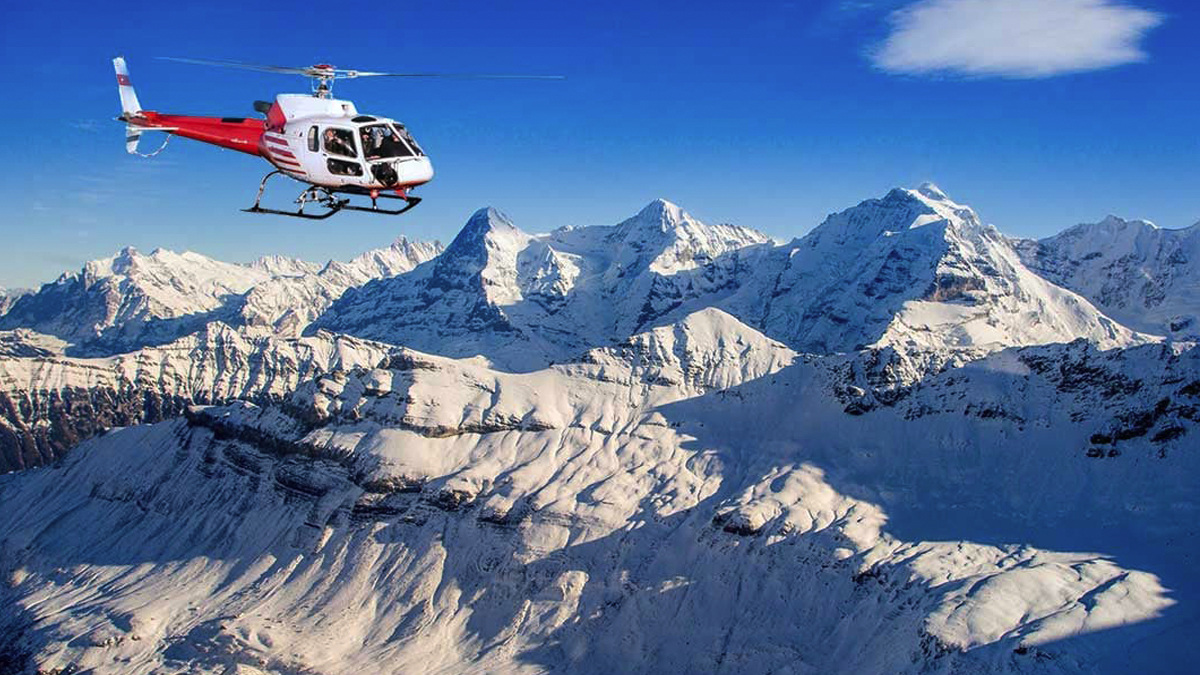
For those with limited time, some opt for a helicopter return from Base Camp to Lukla. This can save 2 to 3 days but is subject to weather conditions and availability.
Everest Base Camp Trek Price 2026 and 2027
The Everest Base Camp Trek remains a sought-after adventure in 2026 and 2027. Costs vary based on the trek's duration, comfort level, and included services.
- Budget Treks range from $1,200 to $1,800, covering essentials like guides, porters, and permits. These are ideal for trekkers seeking a straightforward experience without luxury accommodations.
- Standard Treks typically cost between $1,400 and $2,000. These packages often include guided services, teahouse accommodations, and necessary permits.
- Luxury Treks can range from $3,500 to $7,000, offering premium services such as helicopter returns, luxury lodges, and enhanced comfort.
If you want best trekking Package for Everest Region, Annapurna Region or langtang Regions please feel free Email or WhatsApp +9779851035699, we are always ready to assit you.








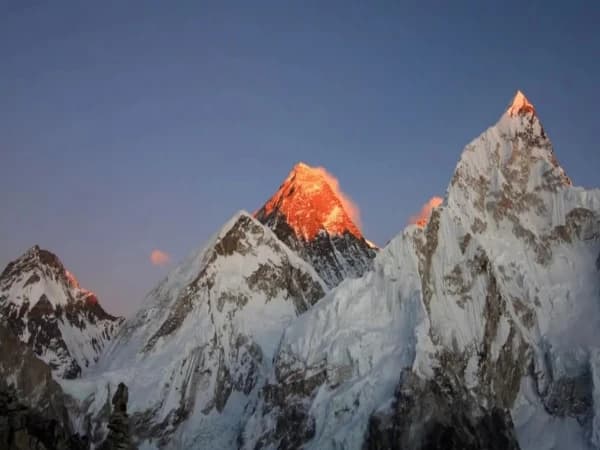
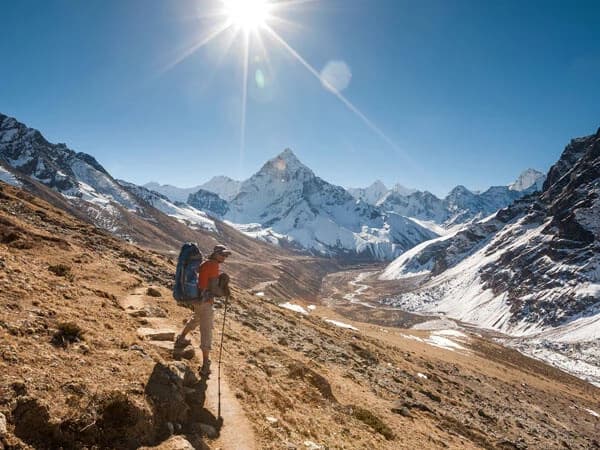
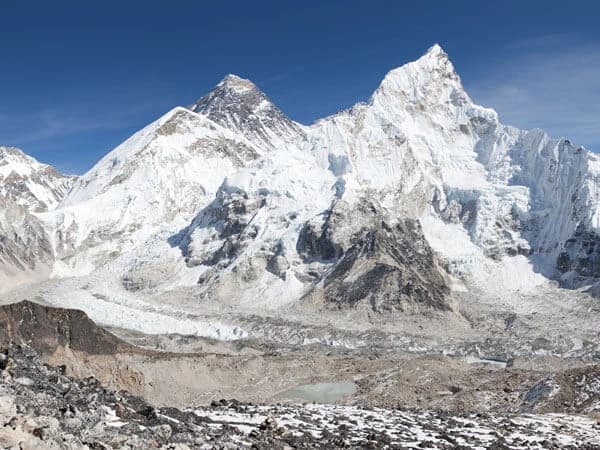
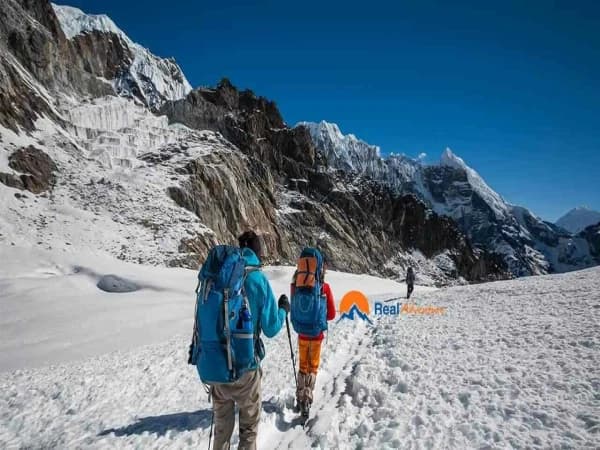
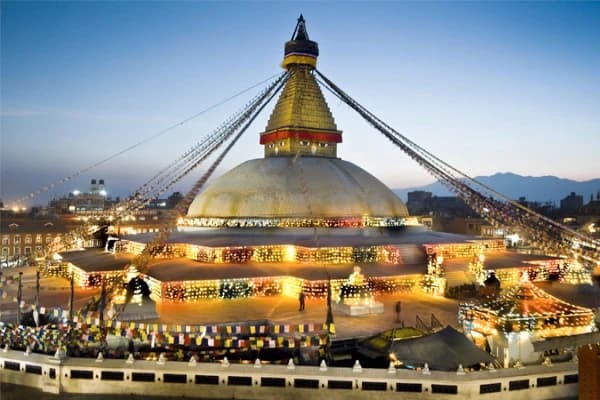
-(5).webp&w=1200&q=75&dpl=dpl_GDHRyonDC5uCJ5MtiFRDmK8W8YHj)
